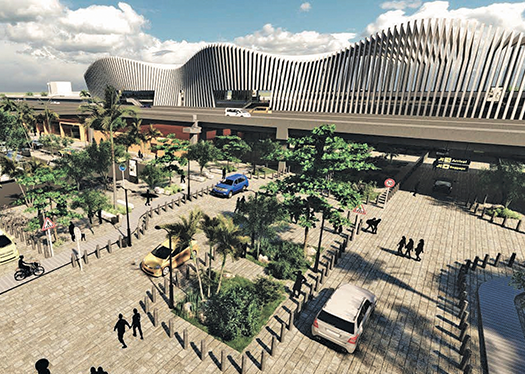
Rendering of a station on the Tren Maya’s Section 5, which is slated to run between Playa del Carmen and Tulúm.(Photo courtesy of Fonatur)
In Mayan cosmology, the Yucatán Peninsula’s subterranean web of interconnected cenotes, or sinkholes, leads to an underworld inhabited by powerful gods. Said by scientists to constitute the world’s largest karstic aquifers, cenotes are viewed as sources of life and death by the Mayans, who pray and make offerings to spirits that dwell in the porous depths. Recently cenotes have become the focus of intense debate over a controversial, US$8 billion railway being built to serve the peninsula’s coastal tourism centers. A signature infrastructure project of Mexican President Andrés Manuel López Obrador, the so-called Tren Maya is slated for completion in December 2023, one year before the president’s six-year term ends. The project has drawn multiple court challenges on environmental, cultural and other grounds. That’s because construction of its 1,500-kilometer (900-mile) route has meant traversing rainforest, protected areas, archeological sites and—more recently—cenotes, known for... [Log in to read more]